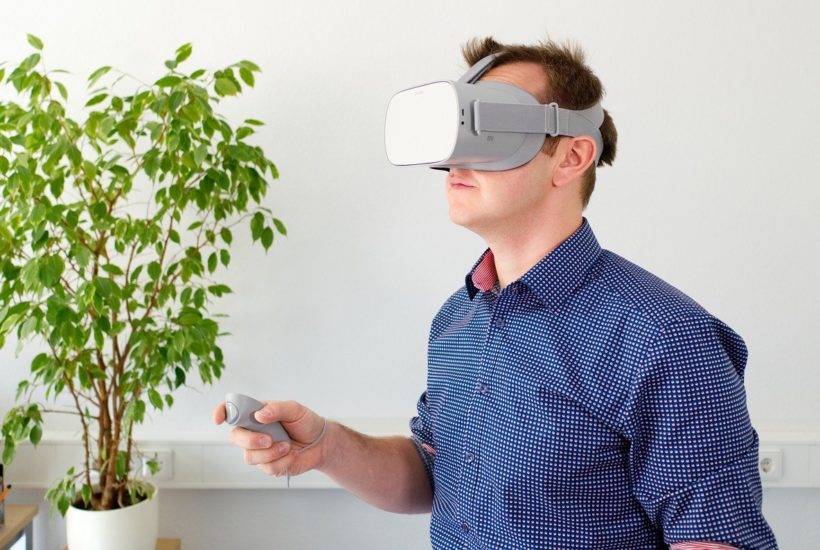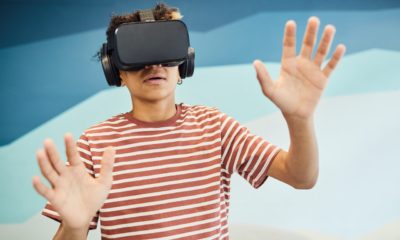Business
XRApplied and the XR big data revolution
Extended Reality (XR) has received a lot of hype lately, but this has mostly centered around what it does on the surface. How good is the hardware, and how immersive are the experiences, for example? But what if we look at the extended applications of XR in the same way that we look at smartphones now—more than just hardware and games? XRApplied is doing just that, with a real focus on big data.

Virtual Reality (VR), Augmented Reality (AR), and Mixed Reality (MR), all technologies which fall under the broad category of Extended Reality (XR) are—just like big data and smartphones did in their growth days—gaining a lot of attention these days. After decades of gradual hardware advancement, the last decade has finally seen the technology shift from a fun novelty into something practical that can be integrated into everyday life. And COVID-19 has only helped to accelerate the transition; opening up opportunities for companies like XRApplied who are advancing the cutting edge of development for the relevant software applications.
Now it looks like we’re on the cusp of another smartphone revolution; something that seems like a pipedream today, but will be an integral part of everybody’s lives just a few short years from now.
Now, as the questions being demanded of XR technologies shift from “how will we do it?” to “how will we use it?” businesses that can provide answers now will soon find themselves with a significant competitive advantage. To answer this question, XRApplied is taking cues from the not-so-distant past and reinventing—in a greatly enhanced way—one of the biggest trends that we’ve seen in the business world: big data.
What enabled the big data revolution?
Today, when the term big data is bandied around, a diverse set of technologies (everything from artificial intelligence to database designs) and advancements in computing power are often the goto enabling factors that are cited. But all of this is just to process the data; the real secret to the big data revolution is data collection. Without it, big data doesn’t exist.
Granted, a large amount of big data work is being done using government databases and historical records but, arguably, the most immediate applications insofar as business is concerned comes from the array of data points that smartphones and other connected devices are collecting. Everything from real-time traffic reporting by Google to highly personalized advertising is being enabled by the real-time collection of thousands of data points.
And, as if the name wasn’t already a dead giveaway, the more data, the better (generally speaking). What ‘more’ means and how it scales varies with application. It could simply mean collecting more data points, or it could mean achieving greater precision for existing data points. And as the amount of data grows, quite often this can enable the combination of data into new and previously impossible forms.
How XRApplied envision Extended Reality growing big data
One of the greatest challenges when implementing Extended Reality technology lies in integrating the myriad of sensors that are needed to make a functioning application. Depending on the application, this can be simple orientation tracking—following the general direction a device is pointed—or it can be as detailed as eye movement tracking. But whatever it is, the challenge is always to capture what a sensor is detecting and then to use its output to generate useful data.
And this is precisely where the crossover point that XRApplied sees is located. By taking data that Virtual and Augmented Reality devices are already capturing and processing—data that is highly detailed beyond anything we can currently collect on a mass scale today—Extended Reality has the potential to turn big data into gargantuan data.
What is the big data potential for XR sensor data?
Big data is still a developing field that still has a lot of room for innovation, even when constrained by existing technologies and data points. Therefore, it is only natural that realizing the full potential of what XR has to bring to big data is going to be a process that will take years where, arguably, the best is yet to come.
But for now, there are already experiments being conducted with what can be derived from VR and AR sensor data. Experiments like those conducted by Stanford University, which found a way to identify individuals using just five minutes of captured motion data. Whilst not technically ‘big data,’ it does manage to show just how detailed the abstractions that can be obtained from XR sensor data can be. Attempting to achieve the same with existing smartphones and other hardware just isn’t feasible—the data isn’t fine-grained enough to achieve that level of precision without also directly capturing personal information.
How this applies to business is only limited by imagination and invention. But one very realistic and relatively simple application that is already under development by XRApplied is an Augmented Reality flooring app. And while this sounds rather boring at first, the data such an app can feed back to marketers, manufacturers and the supply chain has the potential to disrupt each of these industries.
By combining data points about the size of the room the user is in, the time they spend inspecting each flooring type choice and where in each room they focus this inspection time on, how quickly they move their body and a myriad of other points, much can be learned. Marketers and product designers can learn the emotional responses that customers are having to different designs, and manufacturers can predict what orders will be coming before the customer has even pulled out their credit card.
Big data and XR is already more accessible than you think
One of XRApplied’s key motivators is bringing this emerging technology to innovative SMEs who want to win themselves an unfair competitive advantage by integrating the bleeding edge of technology into their businesses. To do this, their focus is less on developing arcane XR hardware and software, and more on streamlining the development process for those who will become the biggest drivers of the tech in the near future: small and medium businesses.
XRApplied is achieving this by standardizing many of the technologies and processes that it develops in-house, creating a streamlined process where a business can go from idea to reality in the fastest time possible. Sure, there will be limits on what XRApplied is offering businesses—it’s not a research lab on the scale of Facebook’s—but this is for the benefit of both XRApplied and the businesses it works with.
By doing so, XRApplied guarantees businesses the lowest development costs and the fastest turnaround time, whilst also giving XRApplied a massively scalable business model which, through its processes and recyclable technologies, doesn’t depend solely on hiring more developers to grow. It’s a fiercely competitive business that takes the form of technological investing; you earn your tech (develop it) and then make your tech work for you.
—
(Featured image by Dlohner via Pixabay)
DISCLAIMER: This article was written by a third party contributor and does not reflect the opinion of Born2Invest, its management, staff or its associates. Please review our disclaimer for more information.
This article may include forward-looking statements. These forward-looking statements generally are identified by the words “believe,” “project,” “estimate,” “become,” “plan,” “will,” and similar expressions. These forward-looking statements involve known and unknown risks as well as uncertainties, including those discussed in the following cautionary statements and elsewhere in this article and on this site. Although the Company may believe that its expectations are based on reasonable assumptions, the actual results that the Company may achieve may differ materially from any forward-looking statements, which reflect the opinions of the management of the Company only as of the date hereof. Additionally, please make sure to read these important disclosures.

-

 Crypto3 days ago
Crypto3 days agoXRP vs. Litecoin: The Race for the Next Crypto ETF Heats Up
-

 Biotech2 weeks ago
Biotech2 weeks agoVytrus Biotech Marks Historic 2024 with Sustainability Milestones and 35% Revenue Growth
-

 Biotech10 hours ago
Biotech10 hours agoSpain Invests €126.9M in Groundbreaking EU Health Innovation Project Med4Cure
-

 Crypto1 week ago
Crypto1 week agoRipple Launches EVM Sidechain to Boost XRP in DeFi
























